
What are the different technical elements of the heat pump?
To operate, the swimming pool heat pump needs different components. Each of them is part of the circuit and has a particular role that is essential to play for the proper functioning of the entire device. We will discover in detail in this article how the pool heat pump works and what is the role of each component.
The evaporator
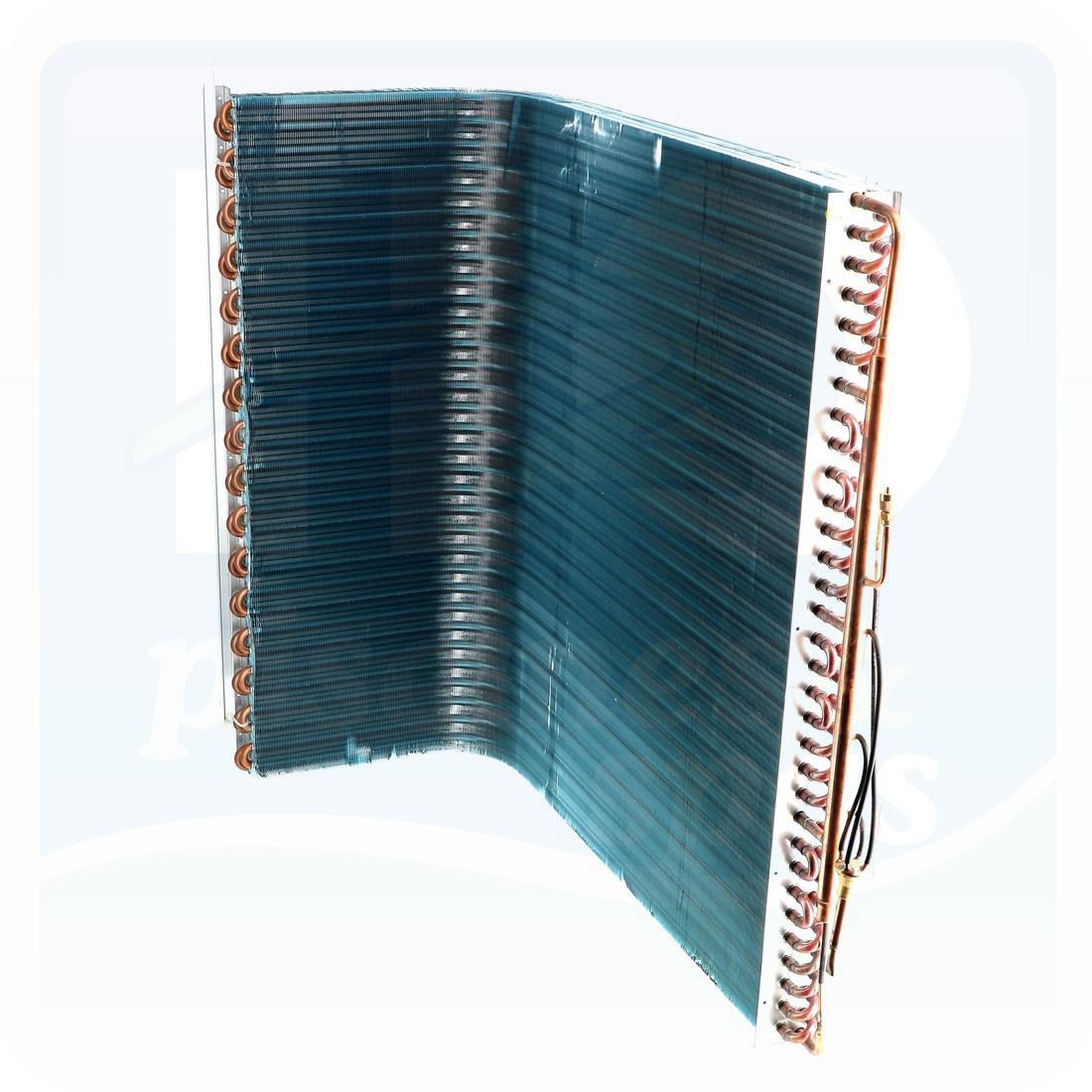
The evaporator is primarily a kind of vacuum cleaner. It is he who captures the calories from the surrounding outside air. This is the reason why it is necessary to have sufficient space around the heat pump so that the interception of the air can be done easily. It ensures the passage of the calorific flow to the refrigerant. The evaporator can be plate or finned. Forced convection finned evaporators are the most used because they ensure better air circulation through the exchange surfaces thanks to one or more fans. The larger it is, the more efficient the heat pump.
The compressor
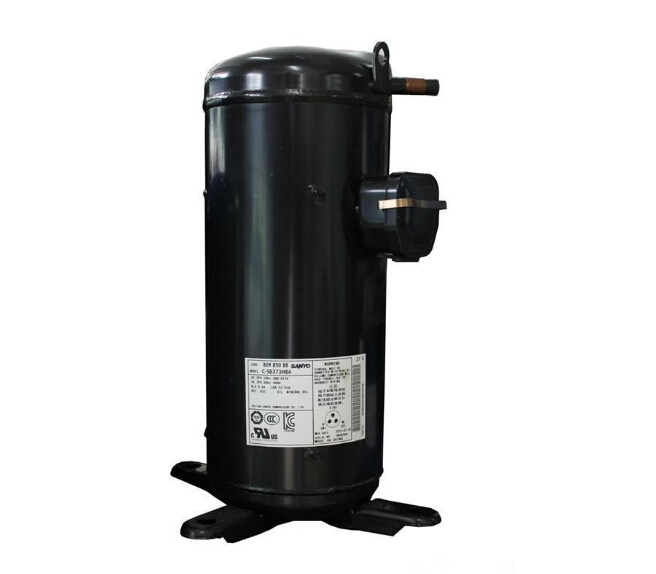
The compressor of a swimming pool heat pump, as its name suggests, compresses and increases the pressure of the refrigerant. The compression/expansion cycle produces heat transfer. It has two connections, one is for suction, the other for gas delivery. The compressor can be on/off and operates at a 50 hertz or Inverter frequency, in this case it operates on a frequency range between 20 and 90 hertz depending on whether the heat pump is in the heating or stabilization phase. There are several types of compressors.
The piston compressor is the least efficient, it should be avoided in the context of a swimming pool heat pump because it only supports fluids in the gaseous state and it is rather noisy.
The rotary compressor can have one or two stages. It gives a constant power and this whatever the temperature. It needs a very low amount of energy and is quieter than the reciprocating compressor. In addition, it has a greater longevity.
The Scroll compressor is the latest evolution of this device. Almost constantly, compression and evacuation are simultaneous and continuous. It perfectly absorbs speed variations and can tolerate the presence of liquid. At start-up, the voltage is half as great and the time is 4 times faster than that of a reciprocating compressor. It produces less vibration, so it has a very low noise level and its energy consumption is very low, which makes it a high-performance device.
The exchanger
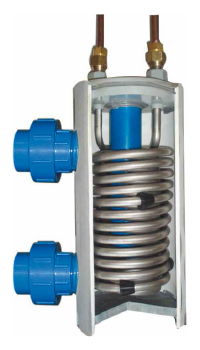
The heat exchanger is a coil that passes through a jar. The water from the swimming pool enters the jar and recovers the heat from the gaseous fluid which circulates in the coil. The fluid is liquefied by condensation, so at the outlet of the condenser, the gaseous fluid has lost its heat and goes into a liquid state. The exchanger fitted with fins increases the heat exchange surface.
The titanium exchanger is more resistant to the chemicals (bromine, chlorine, etc.) used to treat the water in the swimming pools. It is essential if salt electrolysis is installed. In addition, it optimizes caloric efficiency thanks to its high conductivity.
The brazed plate heat exchanger is efficient, robust, compact and uses less refrigerant.
L he twisted heat exchanger allows a better exchange, therefore a better calorific yield.
The regulator
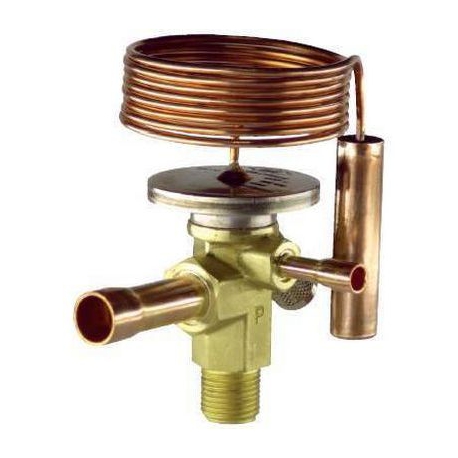
The regulator has the opposite role of the compressor. It allows the refrigerant to change from a high pressure state to a low pressure state. With the sudden drop in pressure, the fluid goes to a temperature of -20°C. It supplies the evaporator with refrigerant.
The capillary expansion valve is the simplest expansion valve. It consists of a tube of a length and a more or less important diameter which will determine the necessary power delivered to a heat pump. However it is used for low power installations.
The electronic expansion valve is very precise and reliable. Thanks to its digital regulation, it optimizes the injection of the refrigerant, the regulation of the temperature of the cold source and the defrosting. The performance and efficiency of the heat pump are ideal whatever the operating regime.
The thermostatic expansion valve automatically regulates the flow of the refrigerant and maintains the balance of the pressures between the inlet of the fluid (liquid under high pressure) in the regulator and its outlet (low pressure at -20°C). This is the most commonly used expansion valve for heat pumps.
The electronic card
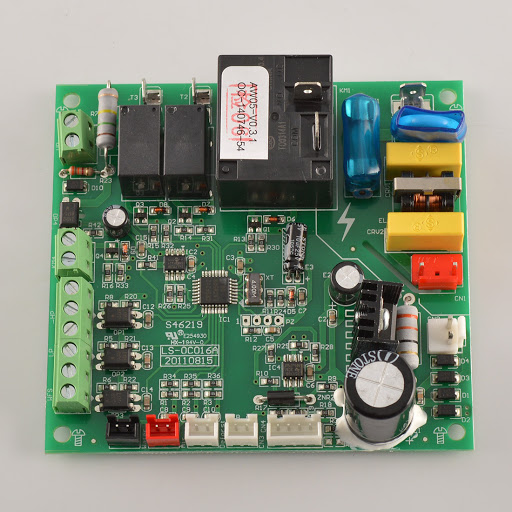
It is an essential element. The electronic card makes it possible to adjust and coordinate the assembly: evaporator, compressor, exchanger and expansion valve. The more advanced the card, the more performance it gives to the heat pump.
You now know the main technical and electronic elements that heat the pool water and that make up the swimming pool heat pump. A better knowledge of the device allows you to better choose your heat pump, taking into account the characteristics of the pool and the wishes of each one.
Want to know more about how a pool heat pump works? Browse our articles to find out which refrigerants for the pool heat pump are used and why a defrost function for the pool heat pump is essential.